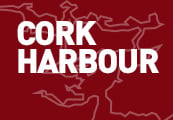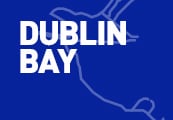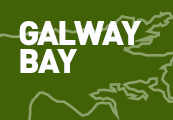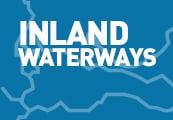Displaying items by tag: Bangor
Bangor RNLI, the lifesaving charity on Belfast Lough based in Northern Ireland, has launched a Mayday fundraising campaign to support its vital services.
The charity has revealed that it was called into action 36 times in 2023, highlighting the importance of its work in saving lives.
To support its lifesaving services, the charity is urging members of the public to participate in the Mayday Mile, a challenge to cover a mile a day throughout May.
The funds raised will help provide the necessary training and equipment to keep the lifesavers safe. Glen McMahon, a Bangor RNLI volunteer, emphasised the significance of the charity’s work and the need for public support, particularly during the busiest time of the year.
The RNLI’s Mayday fundraiser begins on May 1 and will run throughout Ireland and the UK. To participate in the Mayday Mile or find out more about the RNLI’s vital work, visit rnli.org/SupportMayday.
Bangor RNLI Lifeboat Benefits from Belfast Lough's Community Generosity
Bangor RNLI station on Belfast Lough is one of three local charities in Bangor and Ballyholme to benefit from the generosity of the local community.
On Monday, 20 November, volunteers from Bangor RNLI were delighted to be presented with a cheque for £1972.82 from Ballyholme Co-Op store manager Laura and Murdo Murrey Co-Op community charities representative. Bangor Lifeboat benefited from money raised from the Co-Op members card scheme and in-store collections.
Bryan Lawther, Deputy Launch Authority said ‘We are very appreciative to the Co-Op members for choosing to support Bangor RNLI and for this very generous donation. The RNLI relies on these generous donations to provide their training kit, rescue equipment, and lifeboat that help us to save lives at sea’.
Three people were rescued by the Bangor RNLI lifeboat after their 28ft yacht ran aground on Cockle Island, Groomsport. The incident occurred on Thursday evening, August 10th. The RNLI received a request from Belfast Coastguard to assist with the recovery of the yacht, which had drifted and run aground due to a mechanical failure.
The volunteer crew launched their inshore lifeboat and made their way to the scene. Upon arriving, the crew found all three people on board the yacht had lifejackets on. After assessing the situation, the crew decided towing the yacht off the rocks was the safest option. The yacht was then towed to the closest port and its mooring in Groomsport Harbour.
The lifeboat returned to Bangor lifeboat station and was made ready for service.
Bangor RNLI Helm Gareth Whan reminded all seafarers to ensure their engines are well maintained and carry adequate tools to fix any problems they may encounter.
He also advised to always take a means of calling for help and to dial 999 or 112 in case of an emergency.
Bangor RNLI volunteer Kyle Marshall is celebrating 40 years of service with the charity.
Growing up in Bangor and spending his teenage years working around the harbour, Kyle always had a connection with the RNLI and the local volunteers.
On 27 May 1983, Kyle joined the crew of Bangor RNLI and has been serving the community there, on Belfast Lough in Northern Ireland, ever since.
The charity and the resources have changed significantly since Kyle first joined. Bangor RNLI started with a D class lifeboat that was launched by hand on a trolley, progressing on to an Atlantic 75 and more recently the Atlantic 85 class lifeboat Jessie Hillyard.
“Over the years I have seen many changes within the RNLI, most notably how much more effective the investment in training and equipment has become,” Kyle says. “The RNLI crew training is undoubtedly one of the best search and rescue training in the world, which helps all volunteers save lives at sea.”
When asked about his first memorable rescue, Kyle says: “My first call-out was to a capsized boat just off Brompton in Bangor. Three guys in an 18ft skiff had overturned their boat. We were alerted by a member of public who had heard cries for help.
“We launched our D class boat to rescue the crew and casualty boat. It was a very calm still night with a low thick fog when we made our way to the scene. At first we couldn’t see or hear anything but when we cut the engine we could hear calls for help. We followed the calls and were able to locate and recover the three guys from the water.
“I was on the lifeboat with Brian Meharg and Philip Layburn that evening and will never forget it. In fact, I bumped into one of the guys we rescued recently in Bangor and he vividly recalled his rescue.”
Kyle goes on to explain what the lifeboat means to him: “It’s a passion. The RNLI volunteers are like family and I have made and maintained many great friendships over the last 40 years in service. However, I genuinely believe that I personally have got more from the charity than I have given.”
Byron Griffiths, Bangor RNLI lifeboat operations manager said: “Forty years of volunteer service is a fantastic achievement for anyone and we want to thank and congratulate Kyle for his selfless dedication and contribution that has undoubtedly helped to bring many people to safety.”
Bangor RNLI lifeboat came to the aid of two people on Sunday after their 8m yacht broke down in Ballyholme Bay on Belfast Lough.
The volunteer crew were requested to launch their inshore lifeboat by Belfast Coastguard at 1.21 pm to assist two people on an 8m yacht with engine failure.
The crew launched the lifeboat helmed by John Bell and crew members Kelly Clarke, Kyle Marshall and Glenn McMahon on board at 1.30 pm and made their way to the casualty vessel in nearby Ballyholme Bay. The weather conditions were good, with clear visibility and an easterly wind of Force 3-4.
The two men onboard who were on a day leisure trip got into difficulties when their yacht suffered engine failure. The men dropped the anchor to secure the yacht. However, as the anchor was dragging and the boat drifted towards the shore, they required help and raised the alarm.
On arrival, the crew assessed the situation and observed that the men were safe and well, and both were wearing lifejackets.
A decision was made to a secure tow line and bring the vessel back to the nearest safe port at Bangor Marina.
On returning to the lifeboat station, Bangor RNLI Helm John Bell commended the lifeboat and shore crew involved and said: ‘Today was a very satisfactory rescue and the volunteer crew are delighted to have been able to help the two men involved. We would encourage everyone planning a boat trip on the water to ensure your engine is well maintained. And always carry adequate tools and spares to fix any problems you encounter and ensure you have enough fuel for your journey.’
Bangor RNLI crew launched their lifeboat yesterday afternoon (Wednesday, 17 May) when a man fishing in a motor vessel became stranded after his engine failed at Briggs Buoy in Groomsport.
The inshore lifeboat was launched at 1.36 pm with Helm John Bell and crew members Davey Eccles and Andrew Gedge onboard. Conditions were calm at the time, with no breeze and good visibility.
On arrival at the scene and assessing the situation, lifeboat crew member Andrew Gedge boarded the casualty vessel after the man onboard could get the engine going to ensure a safe return to shore. The lifeboat crew then stood by the casualty vessel and escorted it to the nearest safe port at Bangor Harbour.
Bangor RNLI Helm John Bell commented on the call out: ‘This was a straightforward call out that ended well. We are always happy to launch for anyone in difficulty. What can seem straightforward can vary depending on the type of call out and the conditions on the day. We would always advise bringing a means of calling for help and that people keep their vessels and equipment maintained and checked regularly.’
Bangor RNLI came to the aid of a lone sailor yesterday morning (Sunday, 7 May) after his 35ft yacht broke down east of Carrickfergus Castle on Belfast Lough.
The volunteer crew had just assembled at the station for a routine training exercise when at 10 am, Belfast Coastguard requested the inshore lifeboat to launch and go to the assistance of the sailor.
The lifeboat Jessie Hillyard, helmed by Gavin Mitchell and with crew members Katherine Lindsay, Kyle Marshall and Gareth Whan onboard, launched immediately and made its way to the scene.
Weather conditions at the time were good, with light airs, a Force 1-2 wind and calm seas.
Once on scene, the crew observed that the sailor, who was wearing a lifejacket, had dropped the yacht’s anchor to secure the vessel until the lifeboat arrived.
A decision was made to establish a tow line and bring the yacht and the sailor to the nearest safe port at Carrickfergus Marina.
Bangor RNLI was involved in the rescue of a woman who fell onto rocks when out for a walk yesterday afternoon (Sunday 23 April).
The volunteer crew were requested to launch their inshore lifeboat at 3.49 pm following a request from Belfast Coastguard to assist Bangor Coastguard with the extradition of the casualty.
The lifeboat, helmed by Gareth Whan and with crew members John Bell, Ian Dobie and Peter Semple onboard, immediately made their way to the scene four nautical miles from the station, to Grey Point.
There was a Force 2-3 wind at the time and moderate seas.
Arriving on scene, the crew observed Bangor Coastguard which was already on scene, administering casualty care. The lifeboat positioned itself into the rocks where two crew emerged and made their way to the casualty. Having assessed the situation and assisted with the casualty care, a decision was made for the crew to then transfer the casualty who had a leg and ankle injury via stretcher, to the lifeboat. Once this was complete, the lifeboat made its way back to Bangor lifeboat station where the casualty was safely transferred into the care of a waiting ambulance and brought to hospital for further treatment.
Speaking following the call out, Bangor RNLI Helm Gareth Whan said: ‘We would like to wish this woman a speedy recovery from her injury and thank our colleagues in Bangor Coastguard who we worked with to bring her to safety.
‘We would encourage all walkers to enjoy the coastline but to be wary of all edges around the sea and waterside. Slips and falls happen in all locations. Always let someone know where you are going and when you are due back and always check the weather and tides. Take care when walking in dark or slippery conditions. Always take a means of calling for help and should you get into difficulty or see someone else in trouble, dial 999 or 112 and ask for the Coastguard.’
There has been a surprisingly mixed reaction to the news that next weekend, in celebration of the Royal Platinum Jubilee, the sailing-mad town of Bangor on Belfast Lough will be conferred with City Status. Joy has not been unalloyed. Apart from the classic Bangorian’s default reaction of “What’s it going to cost us?”, the time-honoured “Bangor-by-the-Sea” has had its own neat and evocative power of expression over the years.
It’s a title that trips easily off the tongue, much more so than “City of Bangor”. It tells you exactly what the place is all about. And while some famous cities undoubtedly exude glamour, far more of them have a distinctly gritty workaday image, emphasised in this instance by the fact that while Belfast was the smokey place where Bangorians commuted each day to work, their home town was the fresh-aired haven where they gladly retreated each evening, a healthy place where in summer they went sailing, played golf, made an attempt at tennis, or simply enjoyed the benefits of sea air and the fact that it wasn’t a city, Belfast or otherwise
You knew where you were with “The Town of Bangor”. But the sudden imposition of the title of The City of Bangor on a place that’s exactly the same as it was last week has evoked some sardonic responses. Not least was the assertion that it should have been given to the one of the more disadvantaged alternative places that were promoted for the honour but failed to make the cut, less favoured towns such as Coleraine or Ballymena, “for they need it a lot more than we do”.
 “Bangor-by-the-Sea” as it is now, quite big enough and actually a city for 1,500 years
“Bangor-by-the-Sea” as it is now, quite big enough and actually a city for 1,500 years
Outsiders may find this reaction a bit ungracious. But in Bangor, there are those who know that, in thinking they’re conferring city status on Bangor, the modern authorities are deluded with their own self-importance. For they’re simply enabling the contemporary conurbation to revert to the city status which it held 1,500 years ago, when Bangor was an active monastic city of European significance.
Indeed, it had such staying power that when the Mappa Mundi – the World Map - of Hereford Cathedral was created towards 1300AD, only four places were marked and named in Ireland – Dublin, Bangor, Armagh and Kildare. Other monastic cities such as Clonmacnois and Derry, which had also been setting the international pace when Bangor was getting up to speed, were no longer significant. Yet Bangor – despite having proven a natural base for the Vikings – had survived to be the only place of importance on Belfast Lough.
At the time of the Hereford map, Carrickfergus on the Antrim shore was just a rocky islet behind which storm-beleaguered boats could find shelter at high water, while Belfast was no more than mudflats at the mouth of the very shallow River Lagan. Thus Bangor with its two north-facing bays – sheltered in the prevailing southwest wind - was the continuing natural centre of maritime and urban activity.
This seems to have partially been because while Clonmacnois had prospered for centuries as a place of such importance in learning that it drew people in, while Derry was never the same once Columcille had departed to convert the Scots in 563AD, Bangor was in for the long haul and outward-looking, thanks to continuing two-way missionary connections with Europe, notably to the Swiss, Austrian and North Italian Regions.
 The voyaging Irish monks from the ancient Monastic City of Bangor had a greater impact in the heart of Europe than any other Irish seat of learning
The voyaging Irish monks from the ancient Monastic City of Bangor had a greater impact in the heart of Europe than any other Irish seat of learning
They also sent missionaries to what is now the Glasgow area, but that may have been a mixed blessing, as subsequently the rough Scots began to move in on the Bangor area to such an extent that the Stuart king James VI of Scotland, aka James 1st of England, granted Bangor port status in 1620, with all the trading monopolies which that conferred.
However, by that time Carrickfergus was the primary fortified port on what had generally become known as Carrickfergus Bay. Yet it was only a matter of time before it became Belfast Lough, as the rapidly-growing township at its head was becoming such a major commercial and industrial force that in 1888 it was finally conferred with the much-sought City of Belfast status when such titles really meant something.
Bangor meanwhile was developing in fresh directions. For a while, one of the bigger landlords in the little town tried to turn it into a cotton-manufacturing centre, and up to 300 people were employed in the North Down equivalent of the Dark Satanic Mills around Bangor Bay. But the coming of the railway from Belfast in 1865, with links throughout Ireland, was transformational.
For a while, it led to attempts to turn Bangor into a classic Victorian seaside resort. This worked to a certain extent for some time. In fact, it had a certain validity until sun-centred package holidays changed everything. But meanwhile it generated an underlying tension, for Belfast’s very rapid industrial growth meant that by 1900 it was the most atmospherically-polluted city in the world, and for many people this meant that Bangor was much more useful as a healthy-aired dormitory town well clear of Belfast’s grime, rather than somewhere with gaudy hospitality tendencies trying to generate an unreliable income from budget-limited visitors.
This in turn changed the geography of sailing development on Belfast Lough. We have records of recreational sailing in the Belfast-Holywood-Cultra-Carrickfergus upper part of the lough before 1800, and the oldest known image of this sailing is the painting of Belfast Regatta in 1829, when the race area was between Belfast and Carrickfergus
 “Belfast Regatta” of 1829 – the full title reads: “Race Won 19 June 1829, at the Belfast Regatta, by the ‘Ariel’, John McCracken Esq., against the ‘Crusader’, Sir Stephen May, and the ‘Zoe’, Marquis (sic) of Donegall. From the painting by Andrew Nicholl, Ulster Museum.
“Belfast Regatta” of 1829 – the full title reads: “Race Won 19 June 1829, at the Belfast Regatta, by the ‘Ariel’, John McCracken Esq., against the ‘Crusader’, Sir Stephen May, and the ‘Zoe’, Marquis (sic) of Donegall. From the painting by Andrew Nicholl, Ulster Museum.
But with improving rail and road connections to Bangor, the now rapidly-growing former monastic city by the sea began to play an increasing role in the Lough’s sailing development, and though the town’s Royal Ulster Yacht Club (founded 1866 just one year after the railway opened) is historically best-known for its direct links to Thomas Lipton’s five America’s Cup Challenges between 1899 and 1930, in terms of ground-breaking sailing development its input into the new-fangled concept of One-Design keelboat classes through its key role in the Belfast Lough One Design was something of global significance.
There’s a reminder of all this in the April 2022 Edition of Classic Boat magazine, where Tom Cunliffe writes of the restoration by craftsman boatbuilder Alastair Garland of the New Forest in Hampshire of Uandi, the 24-footer which started life in the mid-1890s as one of the new Belfast Lough No 1 ODs designed initially by William Fife in 1895.
 Alastair Garland’s restored 1897-built 24ft LOA Belfast Lough OD in Hampshire.
Alastair Garland’s restored 1897-built 24ft LOA Belfast Lough OD in Hampshire.
In Uandi’s case, she was built for T V P McCammon of Holywood in 1897 by A Hutchinson & Co, whose yard was on North Twin Island in Belfast. Her sail number in the growing class was 7, but their time as the No I class was very brief, for enthusiasm was such that they’d become the No II Class by 1897 with the arrival of the 37ft boats which became the No I class through Force Majeur, and indeed by 1899 the little boats of 1895 origins had become the No III Class thanks to the arrival of new 31ft Mylne-designed sloops which elbowed their way into becoming the No II Class, better known as the Stars.
 The first design for a Belfast Lough OD - the 24 footers which eventually became Class III - was this remarkably modern set of lines first sketched by Wiliam Fife in 1895.
The first design for a Belfast Lough OD - the 24 footers which eventually became Class III - was this remarkably modern set of lines first sketched by Wiliam Fife in 1895.
 The new class getting up to strength, racing at RUYC Regatta 1898. Photo courtesy RUYC
The new class getting up to strength, racing at RUYC Regatta 1898. Photo courtesy RUYC
 All the joys of a running finish at the 1898 regatta…….Uandi on left, with the new RUYC clubhouse under construction in the background. Photo: Courtesy RUYC
All the joys of a running finish at the 1898 regatta…….Uandi on left, with the new RUYC clubhouse under construction in the background. Photo: Courtesy RUYC
Be that as it may, the original 24-footers first mooted in 1895 were of huge historical significance, and all power to Alastair Garland for recognising this and providing himself with a very attractive little day sailer while he’s at it.
However, he’s wrong on one count – Uandi is not the sole survivor of the class. I happen to known where the very restorable hulk of one of her sisters is hidden in plain sight in Ireland, but have so far failed to persuade classic boat enthusiasts that a very important yet manageable Fife creation is waiting for what will undoubtedly be an expensive but very worthwhile restoration, for the boats are a joy to sail in their own right.
 Regatta Day 1898, and the new boats look very well, but after a gybe finish this foredeck is busy and the spinnaker is still up there behind the mainsail. Photo courtesy RUYC
Regatta Day 1898, and the new boats look very well, but after a gybe finish this foredeck is busy and the spinnaker is still up there behind the mainsail. Photo courtesy RUYC
Who knows, but maybe some classics enthusiast in the new City of Bangor might feel that this particular restoration is now a doubly-worthwhile project, for all the stories about Bangor’s new status lead with the fact that it’s now home to the leading marina in Ireland.
This is not something which was achieved easily. A month ago, we published a piece about how Bangor’s anchorages sometimes suffered from severe onshore gales. When it was re-posted on the Ballyholme Yacht Club website, it drew a sad response from Richard Thompson about how the great northeasterly gale of 1976 had resulted in the total loss at Ballyholme of his 26ft Swallow Class Philomela, a boat I once owned myself for several happy year.
But Richard’s point went further than that, for out of a fleet of 80-plus boats moored in Ballyholme Bay, 41 had either been totally lost or very severely damaged. It proved to be a pivotal point which resulted in massive developments about the planning of which I’ve only a sketchy notion, but the fact that Bangor now has a marina of top international standard speaks for itself.
It seems that after the 1976 storm, two Bangor councillors who had long thought the town badly needed a decent yacht harbour tried to encourage local officials to explore what might be possible through special grants and development support from the recently-joined European Union, or EEC as it was then. But the prospect of Brussels bureaucracy and paperwork generally was daunting in the extreme.
However, it happened that at the time the late Hugh Kennedy was the very active Rear Commodore of RUYC, and he took his family holidays every August in Baltimore in West Cork. There, one of his neighbours at high summer was the late Peter Sutherland, an EU Commissioner among many other things, highly regarded as a man who knew his way around all the corridors of power and could get things done. Hugh wondered if it would help if he could arrange an informal summertime meeting between the Bangor marina proposers and Peter Sutherland, and apparently it took place, and very successful it was too.
Thus in looking at today’s Bangor Marina, the jewel in the crown of Northern Ireland’s newest city, you can’t help but wonder if it all began to become reality with a friendly handshake in the back bar of Bushe’s Bar in Baltimore. But beyond that, there’s no need to feel any special obligation to Brussels. For back in Bangor’s Monastic City days 1,500 years ago, Bangor gave some enduring and priceless gifts of faith and civilisation to Europe, so the building of Bangor Marina marked payback time.
Be that as it may, the new city status is going to pose some immediate acronym problems. At the end of June, the town, the marina, and the yacht clubs of Bangor are going to co-operate in staging the successful biennial Bangor Town Regatta, known to everyone by the neat title of BTR. That can hardly be retained now. Yet City of Bangor Regatta becomes COBR, which is quite a mouthful, and inevitably will become COBRA. Do you think the promo “Let’s do COBRA” will have wings?
 Action stations at Bangor Town Regatta, usually known as BTR. With Bangor’s new city status, will this year’s event from 23rd to 26th June become COBRA 22?
Action stations at Bangor Town Regatta, usually known as BTR. With Bangor’s new city status, will this year’s event from 23rd to 26th June become COBRA 22?
Bangor RNLI’s volunteers came to the rescue of six women on a yacht after its engine failed during a passage to Glenarm in Co Antrim.
The inshore lifeboat Jessie Hillyard was launched on Monday morning (9 May) from Belfast Lough to the yacht’s location just off Donaghadee Sound, in choppy seas and a strong breeze.
One of the women on the yacht reported being seasick but she did not require a medical evacuation.
With the yacht under good control with just a headsail, the lifeboat kept a safe distance until the vessel entered the calmer waters of Ballyholme Bay.
There, volunteer crew member John Bell transferred to the yacht and attached a tow line, staying with the vessel until it was safe in Bangor Marina.
The women later showed their appreciation by presenting the crew with a bag of chocolate cookies, which went down well after the lifeboat had been refuelled, washed down and readied for its next service.
Speaking following the callout, Bangor RNLI helm Jack Irwin said: “On arrival at the scene, we were happy that our assistance was not required immediately, and we shadowed the vessel until we were in calmer waters, where we initiated our tow.
“We were delighted to deliver those onboard to the safety of Bangor Marina, where the staff were waiting to assist with mooring.
“As we head into the summer months, now is a timely time to remind anyone planning a trip to sea to check your vessel's engine and ensure it is well maintained before setting off on a passage.
“Always carry a means of calling for help and let someone on the shore know where you are going and when you are due back.”
























































